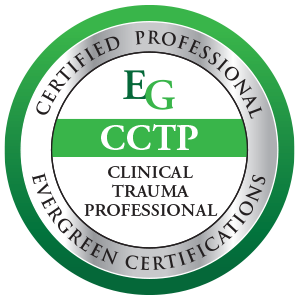What You’ll Learn in this 2-day Intensive Training
Conceptualize how traumatic stress develops
- Systemic traumatic stress
- Symptom review for DSM-5-TR diagnosis
- Review of effective treatments
- Tri Phasic model
- Most used clinician-friendly instruments to assess traumatic stress
Core Competencies of Traumatic Stress
Bio-Psycho-Social-Spiritual Factors that Produce Anxiety & Traumatic Stress:
How events can become symptoms
- Precipitating events
- Meaning making
- Physiology of trauma
- Perception
Neurobiology and Biology of Traumatic Stress:
Deeper understanding of the impacts of trauma
- Research of impact of trauma on the brain
- The biochemical, affective, and cognitive impact
- Affective volatility
A Framework of Healing for Survivors of Traumatic Stress:
The simplicity of trauma resolution
- “Active Ingredients” of all trauma treatments
- Cognitive Restructuring & Psychoeducation
- Therapeutic Relationship & Positive Expectancy
- Self-Regulation & Relaxation
- Exposure (in vivo & imaginal)
- Overview of research to support framework
- Strengths and systemic perspective
Effective Treatment Interventions:
Review of the go-to evidence-based approaches
- Cognitive behavioral techniques (PE, CPT & SIT)
- EMDR & bilateral stimulation
- In vivo exposure
- Energy/tapping techniques
- Somatic Experiencing & sensorimotor
- Limitations and weaknesses of evidence-based trauma treatment models
Connect clients to a diagnosis
- Diagnostic and Statistical Manual of the APA
- DSM-5-TR® changes and limitations
- ACE & developmental trauma
- Diagnosing PTSD with the PCL-5
- ACES (screening & psychoeducation)
- TRS (treatment planning and monitoring)
Evidence-Based Strategies for Trauma Therapy:
Skills to integrate for stabilization and treatment
- Relaxation/self-regulation
- Grounding
- Containment
- In vivo and imaginal exposure
- Writing/journaling
- Drawing art
- Healing metaphors
- Transitional objects
Empowerment & Resilience Treatment Structure:
Client adaptive and overdaptive coping behaviors
- Psychoeducation/cognitive restructuring
- Trauma adaptation
- Systemic influences
- Emotional & psychological stressors
- Information processing model
- Psychosocial model
- Posttraumatic growth & resilience
Interactive Exercises/Application of Skills:
Live demonstrations to practice skills
- Cognitive behavioral techniques
- In vivo exposure protocols to begin healing immediately
- Thought Field Therapy (TFT)
- Bilateral stimulation
The Role of Traumatic Stress in Other Clinical Disorders:
Considerations for Personality Disorders, Dissociative Identity Disorder & more
- Traumagenesis
- Traumaddiction
- Comorbidity
Objectives
- Evaluate the causes of posttraumatic stress and how events turn into posttraumatic symptoms.
- Determine the common elements for treating posttraumatic stress to have better treatment outcomes.
- Identify the clinical application of various theoretical treatment models for traumatic stress and how the common elements are embedded in these models.
- Evaluate traumatic stress from neurobiological, biochemical, psychological, social & spiritual perspectives.
- Integrate evidence-based skills for developing, maintaining, and enhancing your therapeutic relationship for more successful outcomes.
- Utilize ACES as an important tool in cognitive restructuring and evolving identity away from shame towards self-compassion.
- Utilize specific psychoeducation and cognitive restructuring techniques for maximizing engagement and participation in early treatment.
- Analyze the efficacy of self-regulation skills as a preliminary treatment intervention and to integrate throughout trauma treatment.
- Integrate CBT techniques to promote the development of stability, self-efficacy, anxiety management, and relational capacities in traumatized clients.
- Utilize empirical markers to know when it is both necessary and safe to transition from the safety/stabilization phase of treatment into the trauma memory processing phase without guesswork and minimal crises.
- Assess the potential risks and limitations of trauma treatment techniques.
- Integrate skills of neuroception, interoception and acute relaxation to interrupt physiological threat response.
- Develop skills for safety, stabilization, grounding and containment in trauma treatment.







